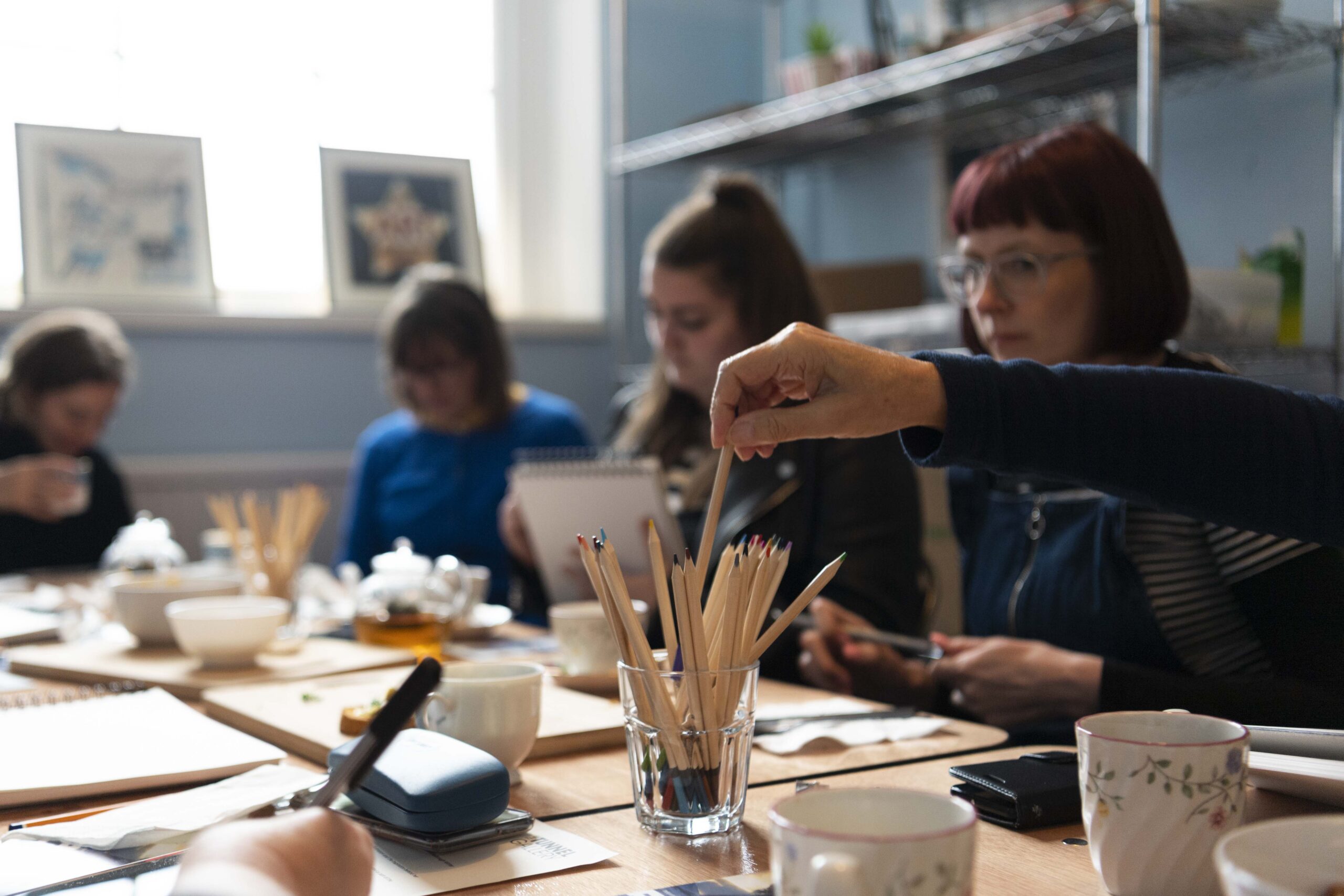
Hi. I’m Frances Moffatt and I’m a freelance illustrator based in Middlesbrough. I created my piece ‘ReCreation’ for the Tunnel Gallery commission for Celebrating Hidden Middlesbrough in conjunction with Navigator North. The project comprised of a physical installation at the Tunnel Gallery billboard in Exchange Square, and an accompanying virtual exhibition on the Tunnel Gallery website.
The project explored contemporary leisure and entertainment in the town, inspired by the historic Middlesbrough Winter Garden and focusing on the Heritage Action Zone. I used the lens of reportage illustration to explore a specific, fleeting sense of time and place, contextualised by the past whilst looking to the future. I was also interested in capturing a variety of interpretations and perspectives on life and leisure in contemporary Middlesbrough.





To support this aim I held an Interactive Research Day, which created a space for members of the community to learn about the heritage of the town, and participate in a reportage illustration workshop. The event took place in two leisure locations housed in historic buildings in the Heritage Action Zone: Base Camp, a space for music, arts, food and drink, and The Zetland Brasserie and Bar. The participants sketchbooks from the day were showcased alongside my own drawings in the Tunnel Gallery virtual exhibition.
‘ReCreation’ is a play on words, encompassing the double meaning of ‘recreation’ and ‘re-creation’, and taken from a chapter title in Lady Florence Bell’s ‘At The Works: A study of a manufacturing town’. Lady Bell, alongside her husband Sir Hugh Bell (director of Bell Brother’s steelworks) founded and ran the Middlesbrough Winter Garden, which opened in 1907. The aim was to provide an affordable space where the working classes could relax and socialise in an alcohol-free environment. ‘Re-creation’ refers to the current reimagining of leisure and socialising around Exchange Square, with a programme of regeneration by the council and exciting independent venues breathing new life into the area.
As an illustrator, this project was an amazing opportunity to further my practice in a number of ways. Firstly, it was a chance to extend my skills in drawing environments, in particular buildings, as I generally tend to draw people and portraits. Secondly, I had never worked on such a large scale before, so I had to adapt my practice and adopt different working methods. Getting outside of my comfort zone on so many fronts refreshed and reinvigorated my practice, and gave me a fresh perspective on my work.

The basis for the final billboard piece was fineliner drawings in my sketchbook, which I would normally digitally edit in Adobe Photoshop. However, this wouldn’t have worked in this context, as if I had scaled my drawings up in this programme the final image would have been low quality and highly pixelated. Instead, I imported my drawings into Adobe Illustrator, a vector-based programme, which meant there was no loss of quality when I blew my work up to a suitable size for the final piece. This meant that the digital editing process was more challenging, as I had to spend more time on this stage of the process, but it also meant that I enhanced my digital skills and gained a deeper understanding of this software.
Additionally, the project gave me a new insight into Middlesbrough, as I learnt a lot about the town’s history and realised that it’s much richer and more complex than I realised. The general narrative around Middlesbrough is dominated by industry, but I found it fascinating to learn more about the town’s artistic and cultural heritage. It was great to uncover stories such as Oscar Wilde visiting Oddfellows Hall (now the site of Boho One) in 1883 as part of a speaking tour, and the art exhibition that was held at the Middlesbrough Winter Garden in 1927, which included works from prominent contemporary artists, including leading British Modernist Paul Nash.
I would like to thank Nicola Golightly and Vicky Holbrough of Navigator North for all their invaluable help and guidance in refining my initial proposal and linking me up with their industrial contacts. This enabled me to fully realise my plans for the project on both a conceptual and practical level. I would also like to thank local historian p.a. morbid for sharing his extensive knowledge of the history of Middlesbrough, and for delivering an excellent talk on the subject as part the Interactive Research Day.
